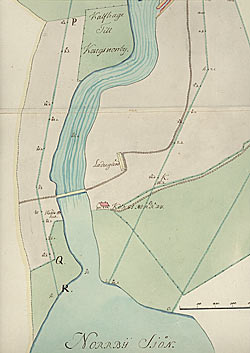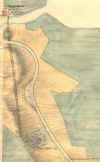|
Kungs Norrby Bridge < Westwards | Cape Birgitta | Borensberg (Husbyfjöl) | Näs Bridge Kungs Norrby Bridge | Sörby Bridge | Ruda Bridge | Sjöbacka Bridge Ljung Bridges | Skarpåsen | Eastwards > |
The Manor dates from the time of King Gustav I Vasa in the 16th century. It is located at the river Motala Ström's inlet into Lake Norrbysjön and near the bridge over the river. On the northern bank of the river was an inn, and on the southern bank was the manor, along with a barn. A special road leading away from the main building followed the edge of the field southwards, while the barn was situated along the main road. An enclosed calf pasture was located on the northern bank of the river and the lake (VaLa). Click on the maps to enlargen! |



